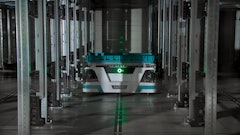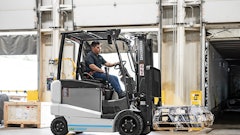
Omni-channel is the brass ring for which retailers are grasping in 2015. They recognize that omni-channel allows them to deliver the best, simplest, most enjoyable customer shopping experience. The ability to empower the retail customer to buy what they want from any channel (in store, online using a browser, mobile using a phone or a tablet) and have it delivered quickly to any location (to the local store for in-store pickup or directly to a home or business) is what customers want. And because customers want it, retailers are eager to provide it. After all, if the buying experience with you is better, faster, simpler than your competitors, you stand a good chance of capturing and retaining more customers.
However, for many established retailers, there are three cultural obstacles standing in the way:
- Supply chain culture.
- Store operations culture.
- Technology governance culture.
First, the supply chain culture. For established retailers, the standard supply chain model is to order en masse from suppliers, receive and store the goods in distribution centers (DCs), distribute appropriate allotments from the DC to each store, and sell from the store to the customer. Store inventory is monitored and replenished as demand dictates.
Established retailers commonly have a very efficient and effective operating model for this process. Clashing with this established, efficient process is the advent of a second directive—let customers order online and ship directly to them. For many retailers, this directive was solved by creating a separate inventory distribution process. Whether they approach it by creating a completely separate inventory order and fulfillment process, or whether they cobble together a hybrid solution, the result introduced inefficiency (and some interdepartmental conflict) into a previously predictable and productive process.
Add to this the desire of many retailers, such as Macys, to now ship directly from store locations, sometimes for same-day delivery—effectively turning each store into a mini-DC and further complications arise. And lest you chuckle, in December, Amazon launched a $7.99 one-hour delivery service in New York City for its Amazon Prime customers. Prime customers could also choose two-hour delivery for free. Amazon stated that it plans to roll this capability out to other markets in 2015.
So while traditional brick-and-mortar stores previously just handled the receiving of inventory from DCs, the game changed underneath them. Now stores have to adroitly introduce a pick-pack-and-ship process—allowing for potential inventory conflicts as customers order the same item from the web, mobile or in-store purchase. Real-time, accurate inventory management now becomes a very real necessity. The established supply chain culture and the new we-can-fulfill-any-order-from-anywhere culture are bound to collide.
Next, we have the old-line store operations culture and the new e-commerce culture. This is a struggle everywhere, not just in retail. As new, eager, ambitious professionals join the workforce, they are thrust into roles in which they must work with older, been-there-done-that professionals. But in retail, it is particularly challenging because the old way of selling to the shopper is no longer the only way to sell to the shopper.
In the 2014 holiday season, surveys report that, on average, 70 percent of shoppers made their most recent purchase at a brick-and-mortar store. But while that may be where purchases were consummated, different surveys highlighted that somewhere between 60 to 70 percent of all holiday transactions involved a mobile device somewhere along the path to purchase. Whether the mobile device was used for research, price comparisons, checking inventory availability or to actually purchase the product, mobile technology is now integral to nearly every shopping transaction.
The old-line store operations team must embrace the new, agile, technologically connected e-commerce team. And vice versa. Because in the end, shoppers do not care about the internal struggles of one business model vs. another, they just want to make a purchase in the easiest and most convenient way. One day that may mean going to the store to browse and buy. Another day it may mean ordering several items online and having them delivered to the home. And through it all, the customer wants the retailer to accommodate them equally well regardless of which channel they use.
Finally, there is the technology governance culture clash that is brewing in many companies. Technology governance (acquisition, deployment, support, standards, etc.) was long primarily the responsibility of information technology (IT). Now, retailers that use social media and mobile apps (homegrown or partnered—like Pinterest) often coordinate and build out those functions through marketing. In many retailers, we are now seeing duplicate technology teams forming. The traditional IT team now works with technologists and developers to deliver applications from within the marketing department.
These two organizations are working through (some may say wrestling through) their various challenges en route to a workable, productive model that leverages the best of each domain without isolating itself from the other. There is no one-size-fits-all answer either. A process that works well for one retailer may fail at its competitor. The issue is that retailers must look honestly at their current culture, project how they want things to be in the future and resolve the organizational challenges before, or in concert with, the move to an omni-channel model.
Omni-channel holds great promise for retailers, but implementation is about much more than technology. Many retailers are finding success because they identified and addressed the cultural challenges as part of their journey. As retailers solve the cultural challenges, the may find the technological solutions much easier to implement and sustain. Which brings us back to the primary driver of omni-channel—the customer. They only have one request: “Make it really easy to shop on my terms.” Do that and they’ll buy from you again and again.















